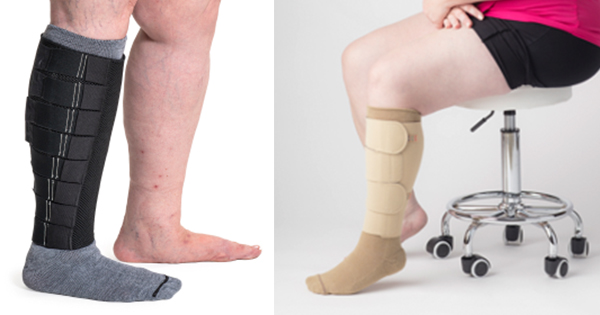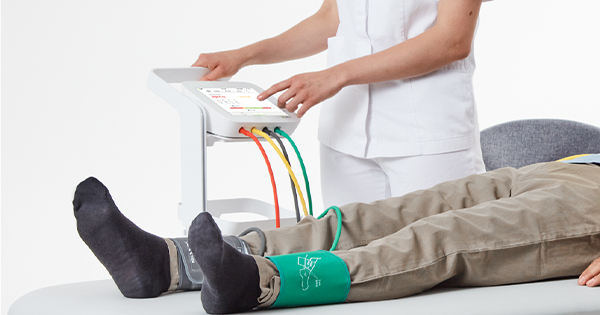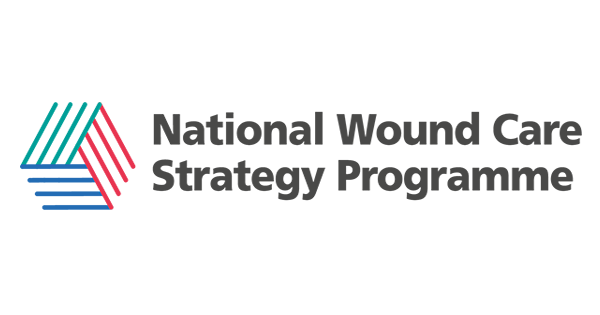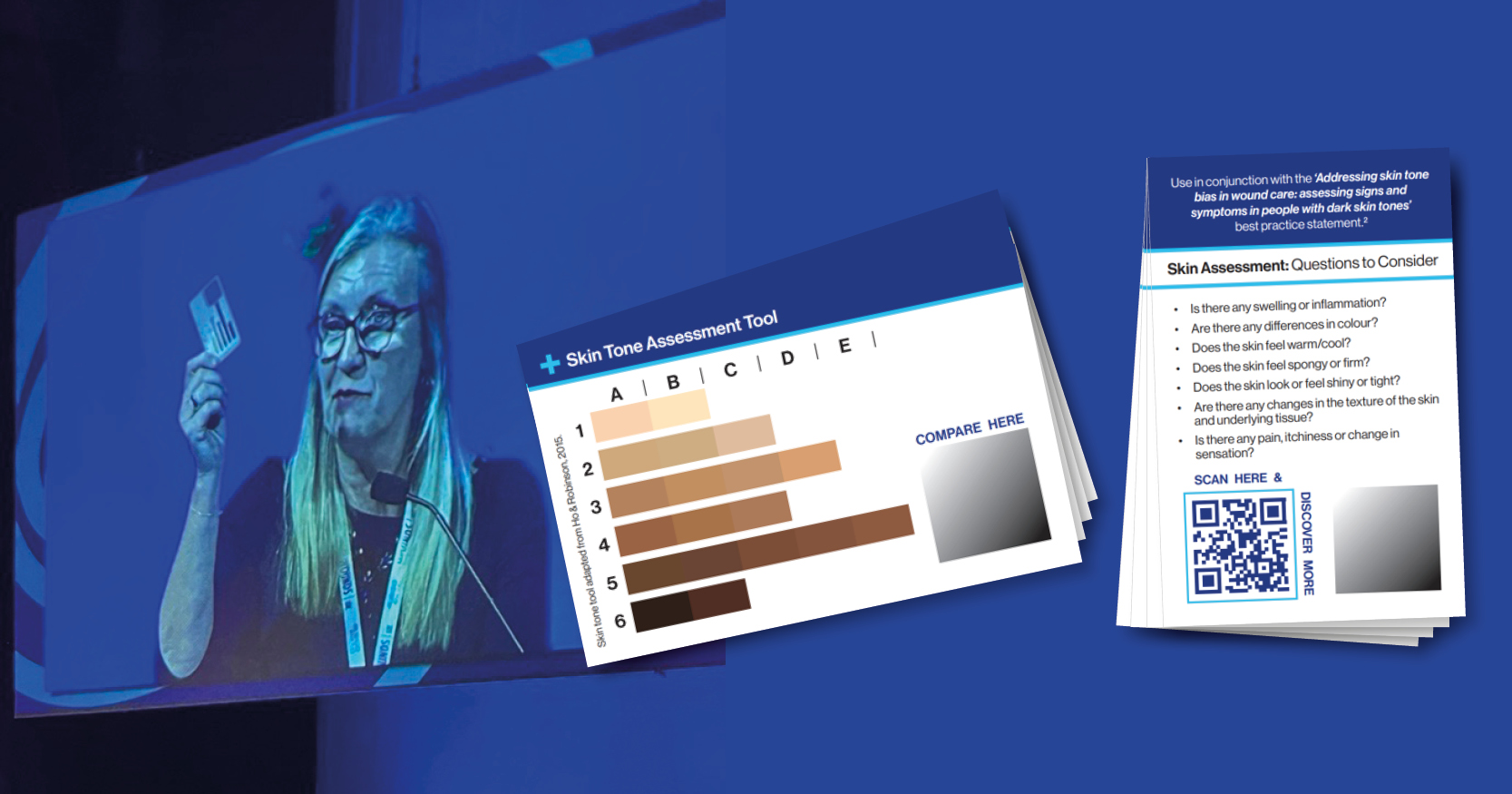Skin tone should form a part of all patients’ skin assessment to ensure that the patient’s baseline skin tone is noted and that any skin changes can be identified accurately and in a timely way. Historically, patients with dark skin tone have often not been assessed accurately, largely due to a bias towards white skin in clinician education and experience (Mukwende, 2020; Oozageer Gunowa et al, 2021). In practice, this has often meant later diagnoses and poorer outcomes for issues such as pressure ulcers (PUs) and infection, in particular.
Language and terminology in wound care can lead to unintentional barriers – such as a focus on identifying ‘redness’ of the skin. This may differ in presentation depending on skin tone, being less likely to present purely as ‘red’ in dark skin tones. This reliance on highlighting redness has created a bias that means individuals with dark skin tones may not receive accurate diagnosis and care (Dhoonmoon et al, 2021).
Background
Recent work in the field of wound care focusing on patient skin tone has highlighted that there are various levels of understanding in terms of clinician experience and confidence in assessing different skin tones, and communicating with patients about this (Kariwo et al, 2023).
There has been an increased debate surrounding inequities in healthcare with wound care becoming a key area in making progress in equity of care for all patients (Maternal, Newborn and Infant Clinical Outcome Review Programme, 2020; Public Health England, 2020). Building on best practice recommendations, skin tone has increasingly become a recognised component of assessment and practice, using tools such as the skin tone tool (Dhoonmoon et al, 2021; adapted from Ho and Robinson, 2015), a validated classification tool that presents a range of skin tones, allowing the user to select a tone that most closely matches the patient’s inside upper arm [Figure 1]. The skin tone tool has been found to be a simple and economical way of assessing skin tone and can be used across care settings, including in patients who may have limited literacy (Ho and Robinson, 2015). The tool encompasses more gradients than binary ‘light’ and ‘dark’ generalisations so is more useful for use in practice.
Issues relating to skin tone in the lower limb
The majority of existing evidence relating to skin tone in wound care is in the field of PU assessment and management (Oozageer Gunowa et al, 2021). Increasing recognition has led to emerging research and guidance in further areas of wound care, such as skin tears and infection (LeBlanc et al, 2024).
Lower-limb issues continue to be one of the major challenges in wound care. In the UK, it has been calculated that there were over
1 million ulcers of the lower limb, which equates to 2% of the adult population having a lower limb ulcer (Guest et al, 2020). In patients with underlying conditions such as venous disease, venous leg ulcers (VLUs) can develop easily — either spontaneously or as a result of mild trauma or injury — and often enter a repeated cycle of non-healing and/or recurrence (Fletcher et al, 2024). Overall, only half of all people with VLUs experience healing within 12 months, and recurrence is common (Guest et al, 2018). In 2017/2018, it cost the National Health Service [NHS] an estimated £8.3 billion to manage patients with a wound (Guest et al, 2020). Annual prevalence of wounds increased by 71% between 2012/2013 and 2017/2018, and there has been a substantial rise in resource utilisation attributable to wound management, including 54.4 million district/community nurse visits, 53.6 million healthcare assistant visits and 28.1 million practice nurse visits in 2017/2018.
There is still often an over-reliance on terms such as ‘red legs’, although erythema does not often present as redness in dark skin tones (Moore et al, 2022). This can result in misdiagnosis and poorer patient outcomes, contributing to inequities for patients with different skin tones.
Skin tone and infection
Infection is another key challenge in wound care, and an area in which a lack of skin tone awareness can lead to issues with timely and accurate assessment and diagnosis (Dhoonmoon et al, 2021).
Wound infection can lead to protracted wound healing, multiple health service visits and increased hospital admission duration. This comes at significant economic cost and negatively impacts quality of life outcomes for the person with a wound and their family. Accurate and timely identification of the signs and symptoms of wound infection are critical to achieving effective management of wound infection (International Wound Infection Institute [IWII], 2022).
Crucially, the importance of timely and accurate management of infection has been recognised to be of paramount importance, with a growing awareness of the threat of antimicrobial resistance and the urgent need for antimicrobial stewardship-informed practices (Fletcher et al, 2020). The United Nations and other international agencies estimate that, if no action is taken, antimicrobial drug-resistant diseases could cause 10 million deaths each year by 2050, costing £66 trillion globally (Interagency Coordinating Group on Antimicrobial Resistance, 2019).
Historically, ‘redness’ has been relied upon as part of assessment and diagnosis, which is not an accurate gauge in many skin tones. Erythema is cited as a key overt (classic) sign of infection (IWII, 2022), which can show up differently depending on the patient’s baseline skin tone: use of the term ‘redness’ itself can be misleading, as the colour change can run the spectrum of pink, red, and purple — in some cases, it may be limited to a subtle darkening of the existing skin tone (British Association of Dermatologists [BAD], 2021).
Survey project
In this current study, as part of ongoing development of assessment practices relating to skin tone, a survey was distributed to assess clinicians’ views and experiences around skin tone, with a specific focus on the lower limb and infection.
The need for this survey emerged from increasing awareness that variations in skin tone can significantly impact the recognition and diagnosis of conditions such as infection, ischaemia, and inflammatory skin changes (Dhoonmoon et al, 2021), with existing assessment tools and clinical guidelines often lacking sufficient representation of diverse skin tones, leading to potential disparities in care and delayed diagnosis, particularly in patients with darker skin.
The survey was designed to explore clinicians’ confidence in assessing skin changes across different skin tones, the challenges they encounter in practice, and the extent to which current education and resources support effective assessment. The survey development involved a review of existing literature and clinical guidelines, alongside consultation with multidisciplinary stakeholders, including tissue viability specialists, dermatologists, and wound care experts. Questions were structured to capture both qualitative and quantitative data, ensuring a comprehensive understanding of real-world experiences and identifying areas for improvement in clinical training and practice.
By gathering these data, the survey aimed to inform the development of more inclusive educational resources and assessment frameworks that better support clinicians in accurately identifying lower limb conditions across all skin tones, ultimately improving patient outcomes. All questions in this survey were centred on patients with lower limb ulcers, with or without potential infection.
The survey was shared in September 2024 through LinkedIn, X, Facebook and Instagram. It was completed by 129 clinicians, including:
- 116 nurses (90% of respondents)
- 7 podiatrists
- 3 doctors
- 1 physician associate
- 2 individuals who responded ‘other’ without further information.
- Participants’ clinical experience varied, as depicted by the breakdown below:
- 0-5 years: 9
- 6-10 years: 29
- 11-15 years: 24
- 16-20 years: 20
- More than 20 years: 47.
Results
Participants were asked if they routinely assessed patients’ skin tone and if they had received any training in assessment techniques.
Of all participants, 72% (n=93) routinely assessed patients with dark skin tones, i.e., at least weekly or daily. Approximately 19% of all clinicians (n=25) rarely came across people with different skin tones. Notably, despite their high level of experience, as indicated by their years of service, 60% of participants expressed a lack of strong confidence in identifying signs of lower limb infection (e.g. cellulitis) in patients with dark skin tones [Figure 2A]. This observation underlined the lack of formal relevant training among the majority of participants [Figure 2B]: approximately 67% of participants had received no formal training on assessing either skin conditions or infections in patients with dark skin tones (n=87).
The vast majority of participants (n>100) identified erythema and discoloration as the two most difficult-to-assess symptoms of infections in patients with dark skin tones [Figure 3A], with participants employing a variety of clinical tools and methods to assess infections in this patient group [Figure 3B].
Participants stated accurately recognising ‘skin colour changes’ was the most common challenge, followed by lack of specific training, guidelines and diagnostic tools [Figure 4A]. To overcome these challenges, >85% of participants used a comparison of affected versus unaffected areas of skin as their primary assessment strategy [Figure 4B].The vast majority of participants agreed that current guidelines either do not adequately address assessment of infections in people with different skin tones (n=71), or only partially address this issue (n=44).
Taken together, these results indicate the complexity of infection assessment for clinicians, mostly due to lack of appropriate training and assessment/diagnostic tools. This unmet need was further highlighted by the resources/training identified by the clinicians to address these gaps [Figure 5].
Conclusions
These data have highlighted an important educational need among clinicians routinely treating potential lower leg infections in people with dark skin tones. Consistent with previously published reports (IWII, 2022; BAD, 2021), timely and correct identification of lower-leg infection signs, such as erythema and discolouration, were identified by participants, indicating the need to provide assessment tools and improve clinician training for early and accurate diagnosis of these symptoms. Despite the relatively high clinical experience of participants in this study, there was an indication of lack of confidence in their ability to promptly assess and diagnose lower leg infections in patients with dark skin tones. A majority of participants stated they assess people with dark skin tones in their routine clinical practice, highlighting the significant unmet need for relevant clinician training and education that has previously been identified (Dhoonmoon et al, 2021). There is an urgent need to provide adequate training at undergraduate level to ensure clinicians are aware of the complexities of accurate wound assessment in different skin tones (Dhoonmoon et al, 2021) through up-to-date resources/guidelines and assessment tools.
Future recommendations
To address the unmet needs identified in this study, it is essential to integrate structured teaching on skin tone diversity into undergraduate healthcare curricula, ensuring that future clinicians develop the necessary skills for accurate and equitable wound assessment. In addition, healthcare organisations should implement ongoing professional development opportunities, including workshops, case-based learning, and simulation training that incorporate diverse skin tones. The development of standardised, evidence-based assessment tools tailored to varying skin tones should be prioritised, alongside ensuring that guidelines and educational resources are accessible across all healthcare settings. Further research is also needed to evaluate the impact of these educational interventions and to explore innovative approaches, such as digital tools and artificial intelligence, to support clinicians in real-time decision-making.
By addressing these areas of need, we can move towards a more inclusive and effective approach to lower limb infection assessment, ultimately improving patient outcomes and reducing health disparities.







